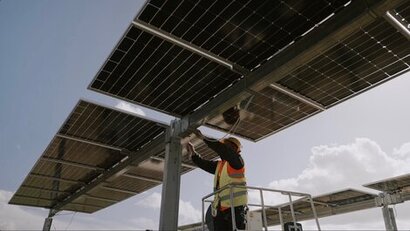
The initiative is part of the group's €8 billion fund set aside for the transition towards a circular economy, furthering its commitment to supporting investments related to the National Recovery and Resilience Plan (PNRR). It is one that many are comparing to the UK Government's newly launched GB Energy, as it uses EU funding available to Italy combined with private funding to invest in renewable domestic energy infrastructure.
The investment will allow GreenGo to construct eight photovoltaic plants with total capacity of 41.8 MW. There will be four plants in Calabria (22.8 MW), three in Sicily (13.7 MW), and one in Marche (5.3 MW). The project contains a mixed commercial portfolio comprising Corporate PPAs with Sasol Italia Spa (47 percent), incentive tariffs from the GSE (17 percent), and a full merchant model (36 percent) for the sale of green electricity produced by the plants, which They are currently under construction and expected to become operational in the first half of 2025.
GreenGo has an ambitious development plan projecting over €300 million in investments by 2026 and expanding its capacity of solar, wind, and storage plants by more than 350 MWp. The company estimates that building and managing these plants will create more than 500 jobs, as part of a renewable energy pipeline currently totaling over 1,800 MW at different stages of development, positioning the Bologna-based company among the 'utility-scale' operators leading Italy's energy transition.
“This transaction marks the start of GreenGo's new phase as an Independent Power Producer (IPP)” said Giuseppe Mastropieri, CEO of GreenGo. “After financing the first 42 MW, we are now starting the construction of another 40 MW of solar capacity to bolster our installed capacity ahead of 2025, a key year when our platform expects to achieve a minimum target of 250 MW in additional authorized green projects . The financing of this project by a prestigious institution like Intesa Sanpaolo showcases the competitiveness of our business model and how a 'system' can be created between SMEs and banks to successfully implement virtuous green economy models.”
For additional information:

